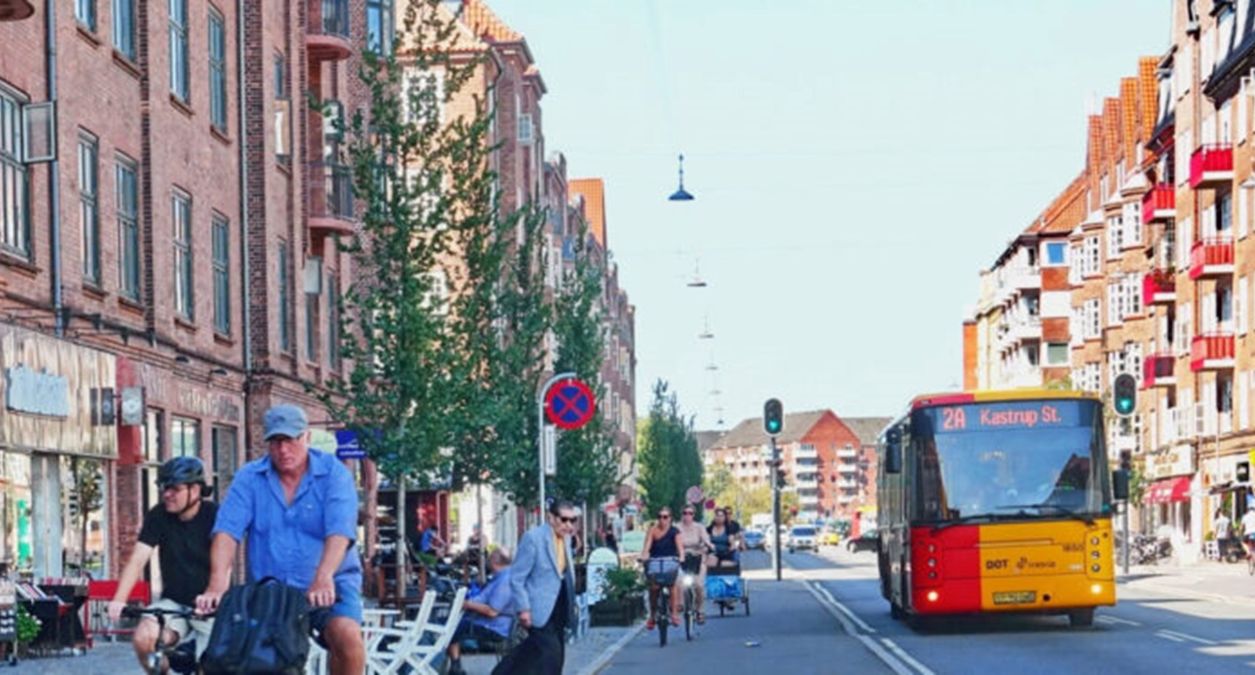Telia's partner: "Better traffic planning with network data"
Traffic planning is most often about increasing transport options and influencing people to choose specific travel modes. To succeed at both, real insights into how crowds move is essential. Recently, Telia’s partner Via Trafik, a Danish traffic consultancy firm, published the below article on the increasing importance of data and on Telia’s solutions.
The article was written by Troels Vorre Olsen, team leader at Telia’s partner Via Trafik, and can be read in Danish here. Below is a translation:
“Data from telecom networks opens new possibilities for mapping how people move. We can now, for example, quickly determine from where people arriving in and travelling within the city center travel from. We can determine where it would make the most sense to create a new bus route or how roadworks or major events affect transport behavior. Data simply provides completely new opportunities in traffic planning, to the benefit of municipal, regional and state authorities, private transport operators and property developers.
Stronger data
"At Via Trafik, we get our data from Telia, one of the largest telecom providers in the Nordics. This ensures a representative amount of data. A single mobile device connected to a mast generates up to 200-400 network events per user, per day. When these data have been extrapolated in relation to local market shares, they provide accurate insight into the movement patterns of a population. The special feature of network-based data is that it covers all journeys, and is not limited to the use of a particular means of transport.
"In the past, it has often been the Technical University of Denmark’s annual, interview-based transport habits survey that formed the basis for looking at movement patterns. In many contexts this is a good tool, but in rural areas and smaller towns there is often too little data for any precise insights about movement patterns. Here, it may be that just a single individual provides responses. With telecom network data, on the other hand, we get a lot more data to work with, about movements across the country. By linking this data and, for example, combining it with transport habit studies, the basis for traffic analyses can be strengthened.
What travel patterns can be analyzed?
"For example, for the Danish Aabenraa Municipality, Via Trafik has used network data to analyze how citizens in rural districts find their way around. Do they travel to the main city of Aabenraa or to other, larger cities in neighboring municipalities? The analysis showed, among other things, that for some areas the city Tønder drew more people than Aabenraa. With that insight, it has been possible for Aabenraa Municipality to take action based on the current travel behavior.
Another example is a new district in Egedal Municipality. Here, data was used to investigate how the infrastructure in a future district should be planned. By looking at how people in nearby areas move today, the expected future behavior can be determined. This made it possible to better designate infrastructure measures for future development.
“It is rare that data for traffic and urban planning are completely sufficient in itself, but when they are combined and analyzed, the data is really strong, for example, by projecting data on how much people travel by bicycle, car and train onto the network data – and vice versa. In one project, Via Trafik investigated the potential for people to choose public transport journeys between selected areas west of Copenhagen, using network data combined and compared with the recorded number of trips with travel cards, as well as a traffic model for the capital area.
How do behaviors change?
"Network data is recorded continuously, which creates the opportunity to look at changes in travel patterns, for example as a result of prolonged road work or pandemics such as coronavirus outbreak. Here the behavior can be analyzed before, during and after.
"In a pilot project, Via Trafik carried out an analysis of movement patterns in Lyngby City Center in connection with the pandemic. Based on network data, an analysis of movement patterns before Covid-19 (January and February 2020) and during Covid-19 (January, February, April, September and October 2021, respectively) was made. The analysis showed, unsurprisingly, a sharp decline in activity in January and February 2021, but also that activity had increased significantly in October 2021 – although it was still below the previous level.
Not perfect
"Although network data is a very good tool, it also has its challenges. If, for example, there are less than five registrations at a given point, this data cannot be used due to GDPR, as it would then be possible to single out individuals. However, work is being done to develop simulation models that can estimate which means of transport are used on less-used routes. Today, it is also typically not possible to define movement patterns in areas smaller than 500x500 meters. It is thus not always possible to map the shorter trips using network data. This fall though, the area possible to analyze will be 250x250 meters, which allows for an even greater degree of detail.
"Still, for us, there is no doubt that network data will become an important tool in transport planning. In particular, the opportunity to gain insight into the movements of an entire population is very valuable in terms of being able to identify the right solutions that promote greener modes of transport and minimize the transport burden on climate change."
Cookie notification
Cookies allow us to optimize your use of our website. We also use third-parties cookies for advertising and analytics. Please read our Cookie Policy for more information.

